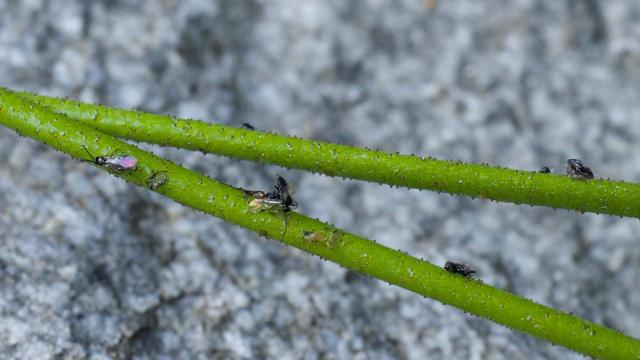In the boglands of the northwestern United States and Canada, an unassuming plant has been trapping and eating insects, totally unbeknownst to science. Today, researchers report that Triantha occidentalis is now the 12th known independent evolution of carnivory — the consumption of animal flesh — in the plant kingdom.
Different families of plants developed a taste for meat separately, and T. occidentalis, in the order Alismatales, now adds its name to the 630-odd plant species that eat animals, usually because their local soils are nutrient-poor, particularly lacking nitrogen and phosphorous, important nutrients for carrying out photosynthesis. This plant was targeted because a previous genetic analysis showed it lacked a gene that is often missing in carnivorous plants, tipping off the researchers that T. occidentalis may be more than it seemed.
Though T. occidentalis lives relatively close to urban centres, it was not officially recognised as carnivorous until now. The research team, hailing from the University of Wisconsin and the University of British Columbia in Canada, determined that the plant traps insects on its stem using specialised sticky hairs that aren’t strong enough to catch bigger, pollinating insects. The new finding is published in the Proceedings of the National Academy of Sciences.

“Before our finding, over the past two decades, only one new example of carnivory has been found. I think people tended to think sticky hairs on T. occidentalis were for defence and didn’t link them with carnivory,” Qianshi Lin, a botanist at the University of British Columbia and lead author of the new study, said in an email.
To test whether the plant was indeed carnivorous or not, Lin’s team stuck dead fruit flies — nourished on a nitrogen isotope — to the sides of the plant, where sticky hairs would hold fast to the light insects. The team suspected that if they then found the same nitrogen isotope in the plant’s tissue, they could reasonably infer that the plant had consumed it from the insects. Based on models developed by co-author Tom Givnish, a botanist at the University of Wisconsin-Madison, the team determined that as much as 64% of the plants’ nitrogen intake was from insects, which is similar to levels seen in other carnivorous plants.

The hairs of T. occidentalis are visible to the naked eye, but only just: They look like little red granules on the plant’s green stem. The hairs strike a balance in stickiness that helps them catch prey without compromising other essential survival tasks. “We believe that Triantha occidentalis is able to do this because its glandular hairs are not very sticky, and can only entrap midges and other small insects, so that the much larger and stronger bees and butterflies that act as its pollinators are not captured,” Givnish said in a UW release.
In an email, Lin explained that the plant consumes the flies by excreting a digestive enzyme on its stem. Nutrients from the prey are then absorbed directly by the plant; the plant also produces an enzyme called phosphatase, which breaks down nutrients that contain phosphorus, an important element for plant growth.
If you have any pet flies, you may want to keep them on a tight leash the next time you’re traipsing around bogs along the U.S. West Coast.
